One fine fall Friday, I backed into my old neighbor Ralph’s driveway and rang his doorbell. He opened his door to see me leaning against the rear fender of a 2014 “gotta-have-it-green” Ford Mustang with the top down. “Wanna go for a spin?” I asked. He quickly donned his coat.
Ralph still lives on the street where I grew up, and I fondly remember him driving his red ’64 Mustang convertible, as well as other Mustangs of that era. He and his sons still have two convertibles and two fastbacks from the era (“No coupes,” he tells me, “although they were quite common.” I wouldn’t know. I hadn’t been born yet.)
He claims to never have taken his cars to their limits. His job taught him to adhere to a conservative driving style. “They wanted you to drive with care, courtesy and common sense,” he says of the company he has long since retired from.
Before this job, Ralph trained as a pilot to serve in the Second World War. “When I got my wings, the war was over and I never fired a shot in anger,” he says. During training, he recalls instructors telling trainees to never “run aircraft through the gate. You never abuse the engine,” he says, noting that the next guy in the craft (which could be the same guy) might suffer engine failure if the previous flier pushed the engine too hard. “I’m sure the guys overseas, in fights, if they had to pull a manoeuvre, sure ran their planes through the gate,” he says, “but not for too long.”
================
He had already checked out the 2014 on a previous visit and had nothing but compliments. “These cars look so good they just break your heart to look at ’em,” he said in his customary quiet voice. “There’s just one thing – the color.”
================
About the color: “Gotta-have-it green” is Ford’s terminology, not mine. Feedback on it ranged from “Whoa” to “that’s bright” regardless of whether the comments came from people on the street or the crew of the International Space Station.
To be fair, once I started driving the car, I saw the same paint job on two or three other vehicles.
For the record, I do not suspect Ford of lending journalists review cars in the loudest possible colors to serve as rolling ads for their brands (cough).
================
A short drive with Ralph led to a chat about what the car was then, as he explored what it’s become now. The four-speed shift and 289 engine of his red beauty gave way to six speeds transmitting 305 horses and 280 lb.-ft. of torque from the 3.7L V6 to the rear wheels. Ford will gladly fit a 5L V8, or shoehorn a 5.8L V8, into the ‘Stang.
The V6 sounds like it belongs in this car, right from the throaty, if muffled, “roar” when you fire it up. We live in civilized times, after all, and must strike a balance between great engine noise and not disturbing the neighbors (drat). Ford claims the V6 delivers 31 MPG. I didn’t keep track.
================
The heritage of these cars is a phenomenon that just doesn’t quit. Sometime within the last decade, Ralph took a trip to Pennsylvania with his boys to buy a Cobra. They were ready to offer $40K. That’s where the bidding started, to their dismay. The new owner drove it away nearly $70K poorer, though I suspect he was smiling.
================
Ford packs plenty of stuff into the touchscreen that dominates the center stack: Microsoft’s SYNC system, a Shaker audio system that paired with my iPod Touch, a navigation system, even a tutorial to help drivers learn stuff like voice commands. Quite the change from the two-knob, five-preset radios of yore.
The above screen is fairly standard Ford fare. Where Mustang designers took things to the next level was the unobtrusive small screen wedged between the speedometer and the tachometer. The driver sets the contents of the screen using a steering-wheel-mounted control. Choices include oil temperature, oil pressure, air-to-fuel ratio and various other system readings. View them in either in a four-line display that you can scroll through or (and this is the brilliant part) as digital representations of analog gauges the likes of which clutter the dashboards of older pony cars (and the a-pillars of today’s hobbyist autocross racers).
Instead of a bunch of holes in the dash, to the right and down from where a driver needs to look, the gauges are at the level of the speedo and tach. I found this information very easy to access and flip through.
Ford packs a lot of goodies into this little screen. Rummage through the menus and you’ll find “track apps” you can use when you let the car hang out on a closed course, plus a number of other digital goodies.
================
Ralph didn’t say much about the in-car electronics. The closest he came to mentioning it was to note that he can still get just about any part he needs for each of his four ponies – five decades after they came off the assembly line. A longtime phone company employee, he wore suits to work, even in summertime. “It was a release for a guy like me to get my hands dirty,” he says, after days spent dealing with occasionally uncouth customers – and his boss. “I got a brain transplant some years ago,” he says. “I got it from my old boss. It had never been used.”
================
Just so you remember that you’re in the latest edition of a 50-year-old family, the analog speedo and tach numbers and markers resemble those I recall seeing in cars from decades long past. Kudos to the designers for packing the modern tech in a small space on the dash while making sure the heritage touches shine through.
================
I wish I could have shown you photos of Ralph’s Mustangs. Alas, three of them were buried under tarps and a lot of other stuff in his garage. I took pictures of his open garage and him holding the tarps up on the corners of the cars, but I promised him I wouldn’t publish those.
The fourth – the red convertible that seduced me as a kid – was in the shop for restoration, and being stored there for the winter.
“We’re like pack rats. We don’t use them much, don’t show them off like we used to, but we keep them.”
================
Electronic power assist steering (EPAS) in the 2014 was a thoughtful touch. From Ford’s website:
EPAS allows you to choose from three settings.
Standard: This is the default factory setting.
Sport: There is slightly greater steering effort required with more road force felt through the steering wheel.
Comfort: There is slightly less steering effort required with less road force felt through the steering wheel.
Sport felt like the right setting for this car, transmitting the heft a vehicle of this size ought to possess to the driver’s hands.
Opening and closing the 2014’s roof involved six seconds, two latches and a button, not unlike the ’64 model’s hydraulic-motor-driven ragtops. The ’64’s tonneau cover snapped neatly into place. “That made it look good for when you went to visit your best girl,” Ralph says.
================
Outside of the foreseeable wake-up call at the pump, the Mustang fell short in a couple of areas. First up: the Mustang got a C- on the hockey bag test. The trunk holds the bag, but I needed to squeeze it in due to taillights being mounted on the fenders instead of the trunk lid, making the opening narrower than it needs to be. My hockey sticks rode in the passenger seat, though standard-length sticks will slide into the rear seat – just.
================
The gearshift pokes out of a center assembly that included the cup holders and a storage cubby with obligatory USB and power plug. This assembly was so high relative to my seating position that my forearm touched it when I shifted gears. Given the placement of the cup holders just ahead of the gearshift, this car might not make many fans among coffee aficionados.
================
Neither Ralph nor I dwelled on the incongruity of hockey sticks poking out of the back seat as we cruised the neighborhood with the top down. Nor did we mind the block-heater plug sticking out of the front grill of a convertible. Really. Some inconsistencies we can live with.
================
Being in or around the car, I was swept up by its je ne sais quoi. Maybe it’s a car for the vain. It certainly stoked my vanity and made me want to spend time driving it.
People WILL see this car, and not just because of the color. The Mustang sports a muscular look consistent with its heritage, a heritage you’re reminded of with every gearshift, every acceleration, every roar of the engine.
Modern touches drive the point home. Wirelessly unlock the Mustang and watch images of ponies glow on the ground by either door. Open a door and see the word “Mustang” glow on the illuminated front door sills.
Maybe most obviously, the kids I noticed openly gaped at it. Some even enthusiastically shouted “nice car.” The quieter ones reminded me of myself at their age when Ralph drove by.
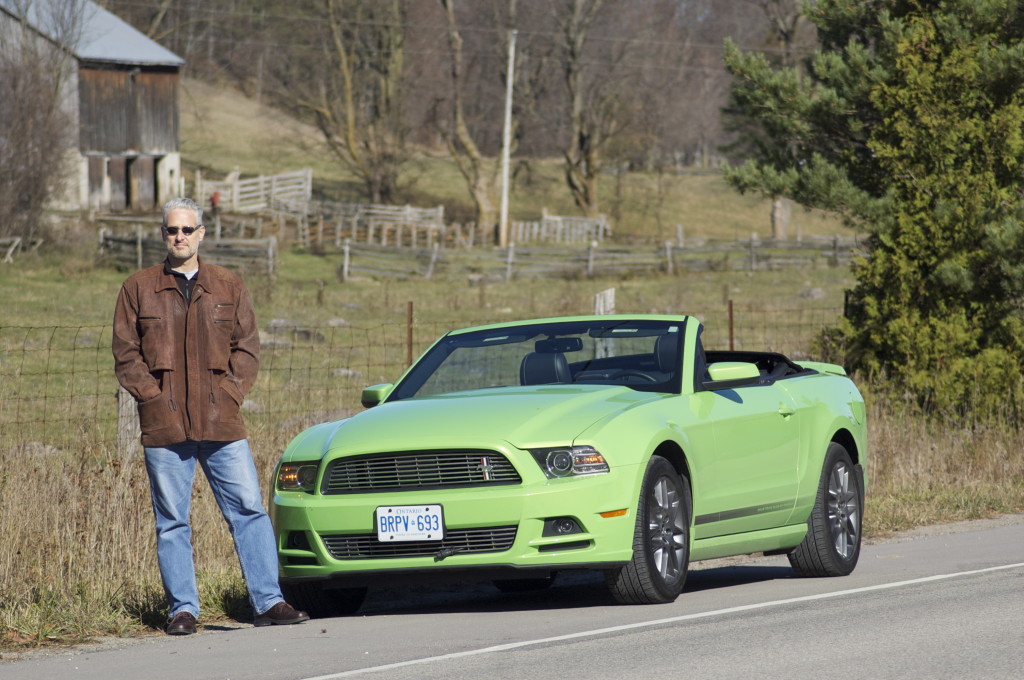


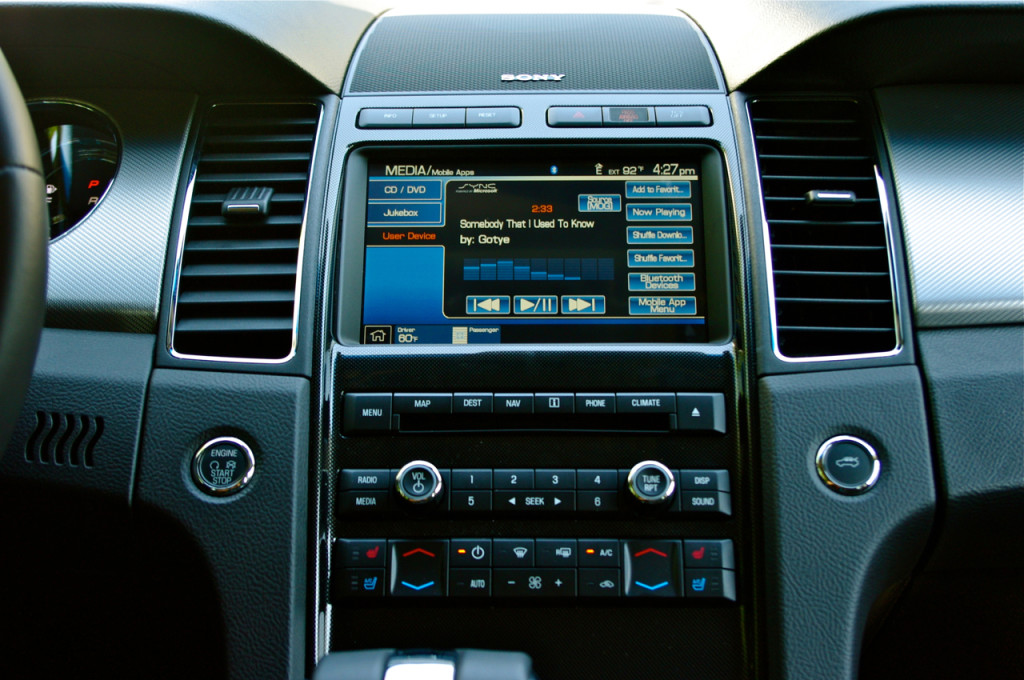
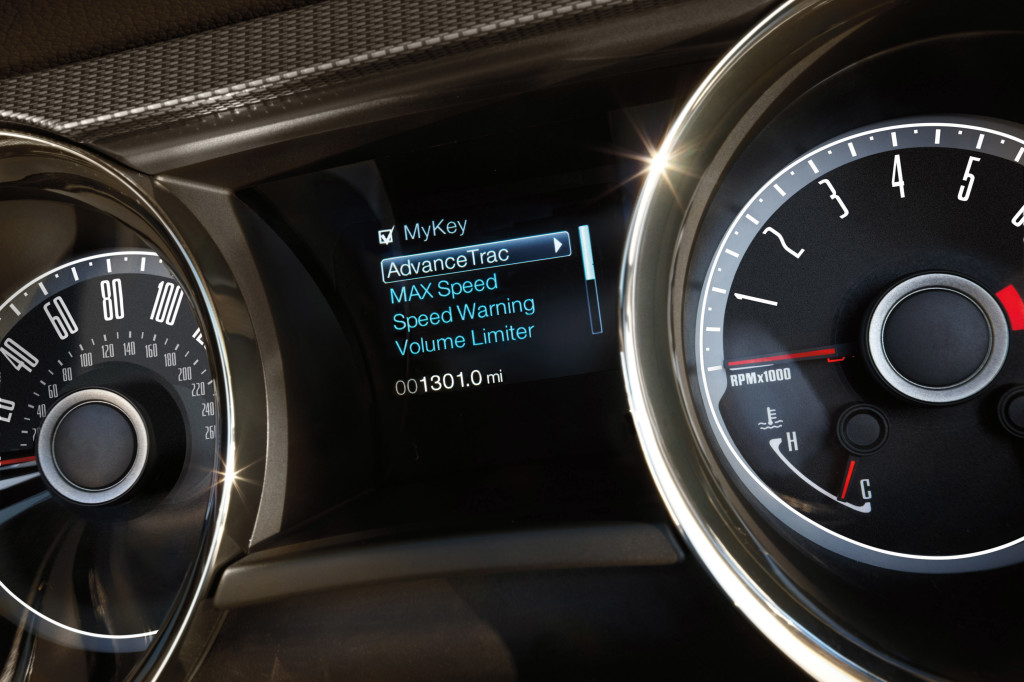
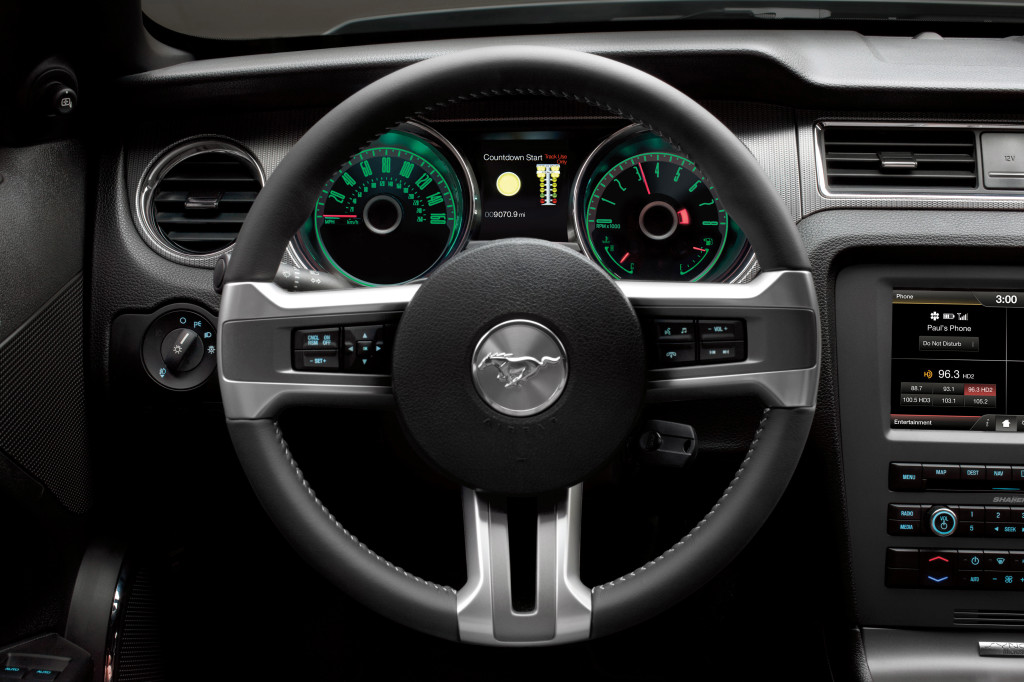

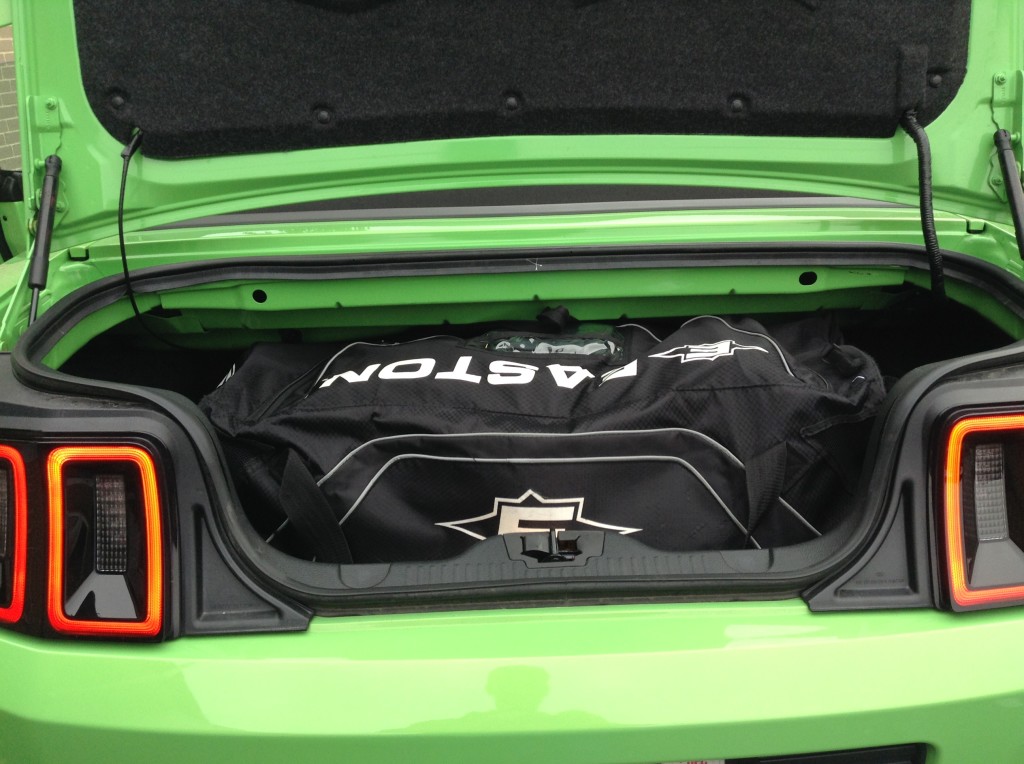
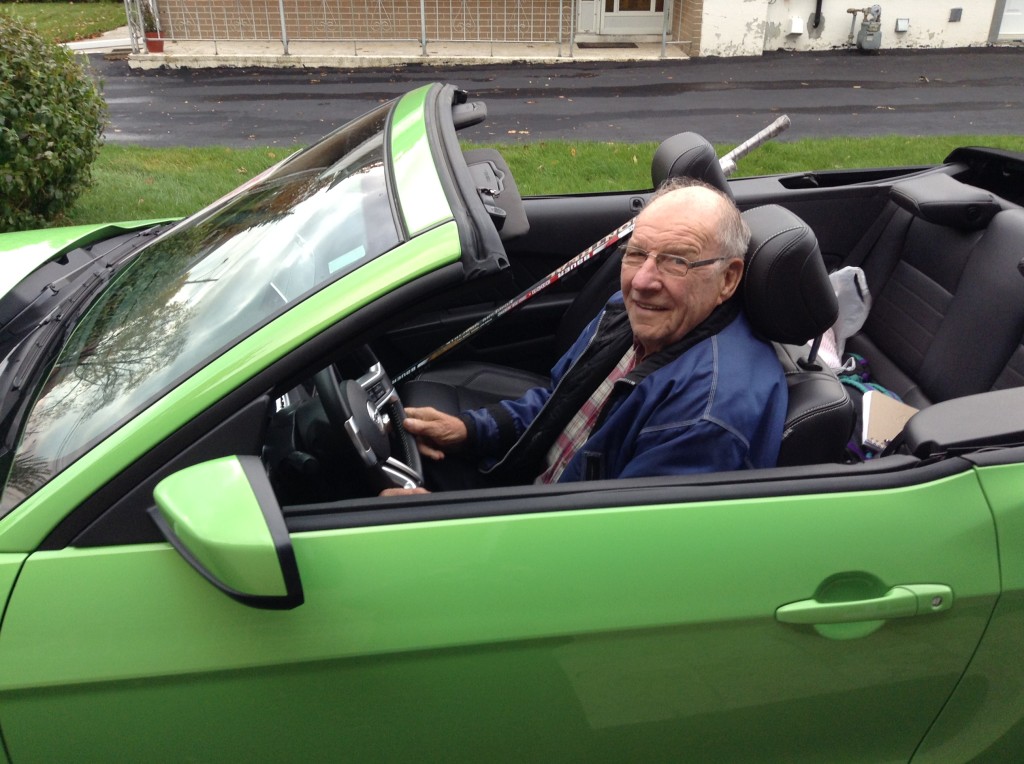
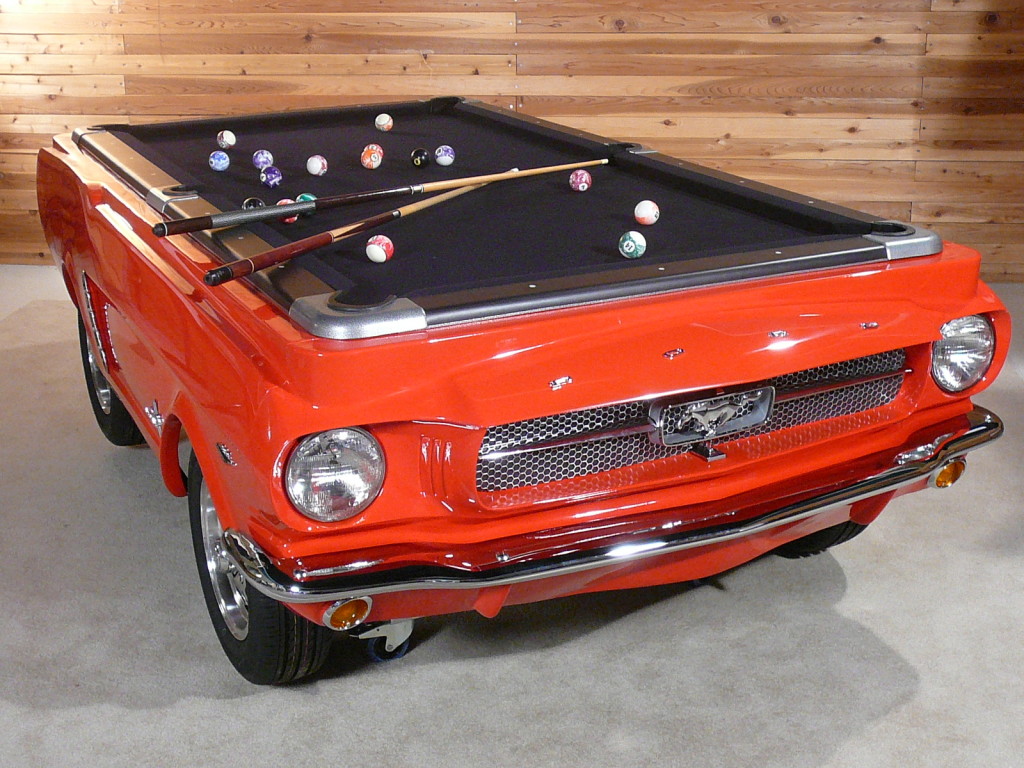
Very cool blog/review of the ‘stang! I especially like your Hockey Bag test!!!!!!!! I enjoy your writing style as well, not the typical car jockey jargon. You’re mixing info with real life lingo, great balance.
Thanks Pete!